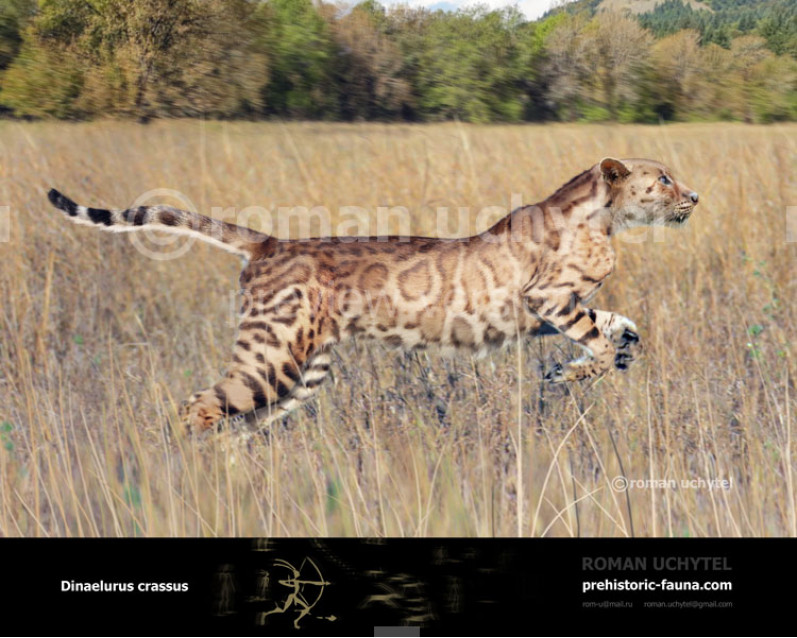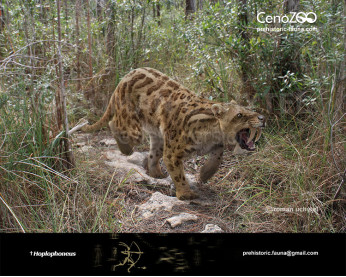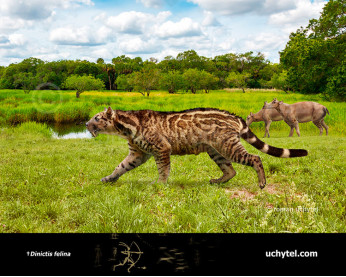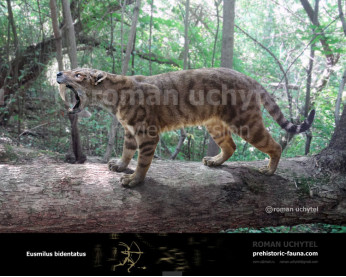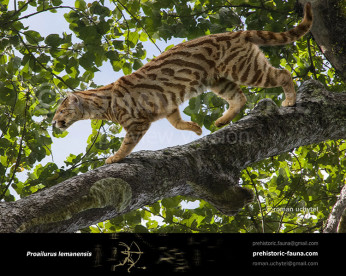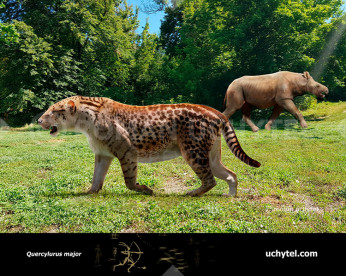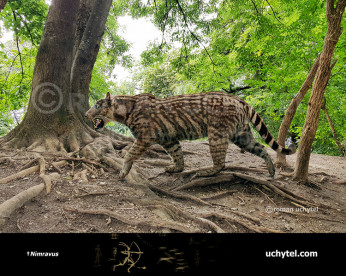Dinaelurus crassus
345345Dinaelurus (Dinaelurus George Francis Eaton (1922))
Order: Carnivora
Family: Nimravidae
Subfamily: Nimravinae
Type species: Dinaelurus crassus
Temporal range: endemic to North America during the Eocene-Oligocene epochs (30.8—20.6 mya)
Size: 1.3 meters long, 80 cm tall at the shoulder. Weight estimated at up to 35 kg
Dinaelurus is a genus of the Nimravidae, an extinct family of feliform mammalian carnivores, also known as "false saber-toothed cats". Assigned to subfamily Nimravinae, Dinaelurus was endemic to North America during the Eocene-Oligocene epochs (30.8—20.6 mya), existing for approximately 10.2 million years. Dinaelurus was named by George Francis Eaton (1922). Its type is Dinaelurus crassus. It was assigned to Nimravinae by Flynn and Galiano (1982) and Bryant (1991); and to Nimravidae by Eaton (1922) and Larry D. Martin (1998). Dinaelurus had a skull extremely broad for its length and had conical teeth; it could exhibit little or no development of sabertooth features and had more rounded cheek teeth with no serrated ridges. It had a relatively gracile skeleton. Martin hypothesizes that it had digitigrade feet. It is believed that Dinaelurus was a cursorial predator, meaning it ran down its prey. This is suggested by the nimravid's short face and large nostrils, similar to those of a cheetah, which is also a cursorial predator.
Dinaelurus (Dinaelurus George Francis Eaton (1922))
Order: Carnivora
Family: Nimravidae
Subfamily: Nimravinae
Type species: Dinaelurus crassus
Temporal range: endemic to North America during the Eocene-Oligocene epochs (30.8—20.6 mya)
Size: 1.3 meters long, 80 cm tall at the shoulder. Weight estimated at up to 35 kg
Dinaelurus is a genus of the Nimravidae, an extinct family of feliform mammalian carnivores, also known as "false saber-toothed cats". Assigned to subfamily Nimravinae, Dinaelurus was endemic to North America during the Eocene-Oligocene epochs (30.8—20.6 mya), existing for approximately 10.2 million years. Dinaelurus was named by George Francis Eaton (1922). Its type is Dinaelurus crassus. It was assigned to Nimravinae by Flynn and Galiano (1982) and Bryant (1991); and to Nimravidae by Eaton (1922) and Larry D. Martin (1998). Dinaelurus had a skull extremely broad for its length and had conical teeth; it could exhibit little or no development of sabertooth features and had more rounded cheek teeth with no serrated ridges. It had a relatively gracile skeleton. Martin hypothesizes that it had digitigrade feet. It is believed that Dinaelurus was a cursorial predator, meaning it ran down its prey. This is suggested by the nimravid's short face and large nostrils, similar to those of a cheetah, which is also a cursorial predator.

